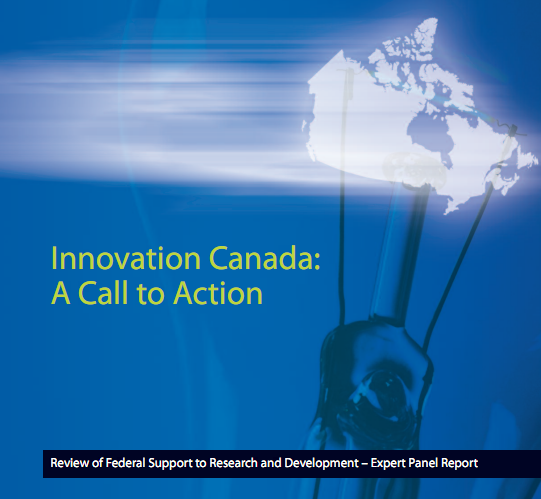The Report of the Expert Panel on R&D, that is. It’s an intriguing and well-written piece of work (kudos to Peter Nicholson), at least as much for what it doesn’t say as what it does.
 There are three things this report does extremely well: i) it explains the mind-boggling number of tiny programs the federal government supports, ii) it graphically shows how the Scientific Research and Experimental Development program massively overshadows all other panels combined and iiI), it amusingly tells the government in no uncertain terms that the bit in their mandate about evaluating the relative effectiveness of programs was a crock because no data exists to allow such a comparison.
There are three things this report does extremely well: i) it explains the mind-boggling number of tiny programs the federal government supports, ii) it graphically shows how the Scientific Research and Experimental Development program massively overshadows all other panels combined and iiI), it amusingly tells the government in no uncertain terms that the bit in their mandate about evaluating the relative effectiveness of programs was a crock because no data exists to allow such a comparison.
(Seriously – read the first three pages of chapter 5, because they set a whole new standard in expert panels rejecting the premise of their terms of reference.)
Those pieces of fabulousness aside, the panel came up with six main recommendations and a bunch of subsidiary ones, which you can find in short form here. Some of them are completely innocuous, such as “encouraging more collaboration” and “simplifying forms”; some are only mildly innocuous, like “having a national dialogue about innovation.” Some of them are neither innocuous nor radical but simply overdue, especially the recommendations on improving venture capital funding.
Others are more radical, such as the creation of a one-stop shop known as the Industrial Research and Innovation Council. The effectiveness of such bodies have to be taken somewhat on faith; single-windows have their advantages, but they depend on effective management which not all arms-length organizations have. The most intriguing proposed mandate given to this body is the creation of a national “business innovation talent strategy.” It’s a fascinating idea, which depends on a great deal of co-operation between several ministries across two levels of government plus educational institutions. There’s some potential for crashing and burning here – but potential for real innovation breakthroughs as well.
The headline recommendation, though, has to be the call to “transform” the National Research Council, though a process which skeptics might call “asset stripping.” Basically, all 17 of its institutes are to be either incorporated into a government agency, turned into a non-profit or integrated with a university or universities. University government relations offices should have a ball with that last one: let the lobbying begin!
But most amazing of all – there is nothing in the recommendations about any of the NSERC or tri-council programs that were included in the review. Not. One. Word.
How did that happen? My guess is we’ll never find out. But I’ll bet it’s a really good story.

 Tweet this post
Tweet this post
